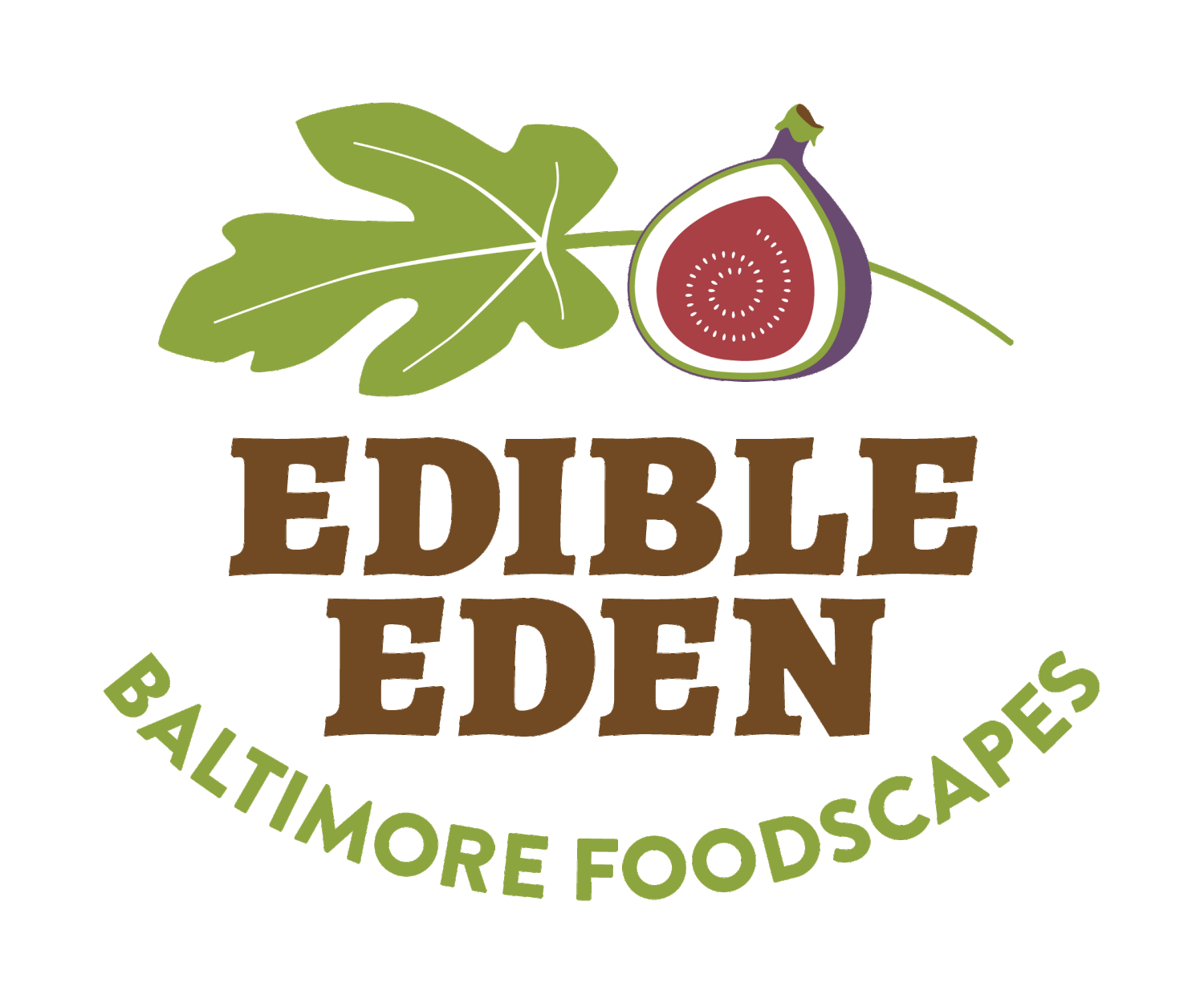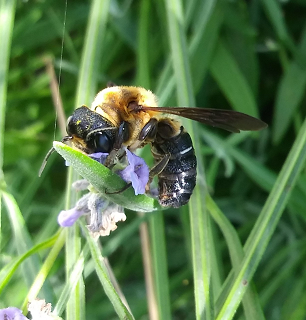There’s a lot of… buzz… about the emergence of periodical cicada Brood X in 2021. Here’s what you need to know about the 17-year cicadas that will be swarming Maryland and several other Mid-Atlantic states.
Brood X is a population of cicadas comprised of species in the Magicicada genus. They are primarily black with red eyes and orange-veined wings, unlike the larger, green annual cicadas (Neotibicen linnei) that are present in small numbers every summer.
The last emergence of Brood X was in 2004. Periodical cicadas emerge every 17 years in vast numbers (we’re talking billions!) so that enough of them can evade predators and breed successfully. Many species of wildlife benefit from the unending supply of slow cicadas as an easy source of food.
In this article, we’re going to focus on what you can do to protect your trees and shrubs from the onslaught of breeding cicadas and how Edible Eden can help!
An adult Magicicada by Dan Mozgai/ cicadamania.com
What to Protect:
Small woody perennials including young plantings of berries, brambles, and small trees are at risk of damage. Herbaceous plants, like your veggies or flower gardens, are not eaten by cicadas or targeted for egg laying.
Species frequently planted by Edible Eden that should be protected:
All non-native fruit trees (apple, pear, cherry, bush cherry, persimmon, pomegranate, etc)
Raspberry / Blackberry brambles - if not well established
Serviceberry (Juneberry / Amalanchier spp.)
Maple - when immature
Chestnut
Redbud
Pecan
Hybrid Hazelnut (Corylus avellana 'Jefferson' and other cultivars)
Chokeberry
Blueberry
Currant/Gooseberry
Species frequently planted by Edible Eden that should not need protection:
Pawpaw
Sumac
Fig
Viburnum spp.
Most Conifer spp.
A young Hybrid Hazelnut (Corylus avellana ‘Jefferson’) that will need protection.
Why to Protect:
Female cicadas damage woody trees and shrubs by using their ovipositor (a long tube that looks like a stinger but is used for egg laying) to carve a longitudinal slit in the bark in which to lay their eggs. Cicadas do not cause any meaningful damage by feeding. It is the egg laying only that puts some plants at risk.
Cicadas prefer to lay their eggs branches that are roughly the diameter of a pencil up to about ½ an inch. Mature trees may take some damage on branch tips and can easily recover, but damage can occur on the main trunk and primary branches of young trees and shrubs, either setting them back significantly in their development or damaging them past the point of recovery.
Trees that are 4 years old or younger and young shrubs are at the highest risk, as most of their branches may be within the preferred size. Young fruit trees, even if they are able to withstand the damage, may lose limbs important to their structure at a time when shaping and pruning are critical to their future productivity.
When to Protect:
Cicadas typically emerge from early to mid-May to June, when soil temps reach about 64F at an 8 inch depth.
Cicadas begin to breed about 1 week after emergence.
Plants should be protected either prior to emergence or the breeding period and remain protected for about 8 weeks until the cicadas are no longer present.
How to Protect:
Avoid spring pruning on trees that will not be protected. It is better to delay pruning until after the cicadas have died off and damaged wood can be pruned out. Branches would have to be cut back further than desired if they had been pruned prior to the damage.
The best way to protect your trees and shrubs is to wrap them in a fine mesh fabric that is breathable and allows the trees to receive rainfall without trapping moisture.
Floating row cover or insect barrier netting work great - you don’t want any type of netting with gaps large enough to let the cicadas in or tangle around a bird’s leg.
You can start by draping the fabric over the tree or shrub. If the tree is larger than the width of the fabric, you will have to make overlapping layers.
Finish by tightly wrapping a few layers around the main truck to prevent the cicadas from climbing up under the netting. You can secure the base with some twine or a zip tie; make sure it is snug but not so tight that it will damage the bark
Cicadas can weasel in through any gaps 1/2 inch or larger, so you will have to tape the edges or staple it every 1/4 inch.
Insecticides, both conventional and organic, do not prevent damage. Organic insecticides are usually targeted toward insect feeding behavior and have no preventative effect on the cicadas’ egg-laying. Conventional pesticides can cause significant poisoning to wildlife or pets that eat the contaminated cicadas, would need to be sprayed at an unsustainable frequency to have a meaningful effect, and do not prevent new cicadas from moving in to damage the trees even as others die. They can also trigger further damage to the trees by creating conditions that allow harmful mite infestations later in the growing season.
Edible Eden Is Here to Help:
Edible Eden will be offering the following services to protect your trees and shrubs:
Full service protection: Edible Eden will cover trees/shrubs in late April and remove covers in late June.
Retail sales: Edible Eden will provide local sales of tree covers (pre-shaped for trees and easier to use) and pre-cut sections of row cover/insect netting for customer use. Supplies are limited, email us today to purchase! (Local pickup only.)










